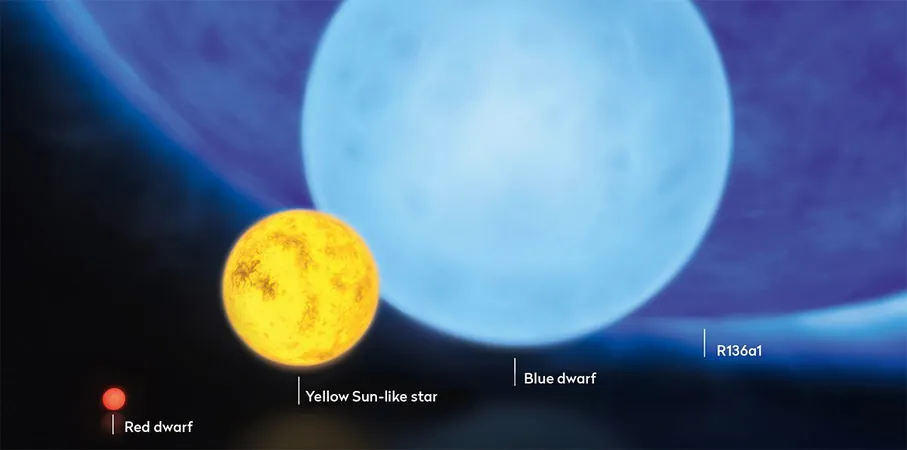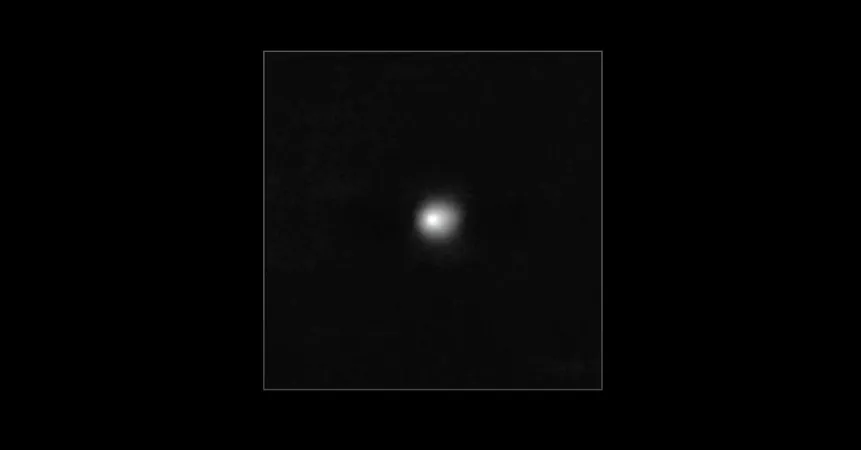
Unveiling the Mysteries of Massive Stars: Insights from an Astrophysicist
2024-11-06
Author: Liam
Stars: Colossal Entities of the Universe
Stars are colossal entities, an astounding testament to the vastness of our universe. While we often refer to them as massive, the term barely scratches the surface of their grandeur. But how do these titanic stars come into existence, and what mysteries do they hold?
We spoke with Raman Prinja, a distinguished astrophysicist from University College London, who has dedicated his career to exploring the enigmatic world of massive stars. Here are the highlights of our enlightening conversation.
How do massive stars form?
Massive stars are born from vast clouds of dust and gas scattered across interstellar space. These clouds collapse under the pull of gravity, forming dense core clumps that heat up as they coalesce. Interestingly, while all stars form through this process, the formation of massive stars—those exceeding eight times the mass of our Sun—is more complex.
When a star reaches about 20 solar masses, its burgeoning radiation generates an outward pressure that complicates further mass accumulation. One fascinating hypothesis is that these giants often form in clusters, merging with smaller adjacent gas clumps or protostars, allowing for their significant growth.
What’s the maximum mass a star can achieve?
Among the stars that defy comprehension, R136a1 stands out. Located approximately 160,000 light-years away in the Tarantula Nebula within the Large Magellanic Cloud, this stellar giant weighs in at an astonishing 170 to 230 solar masses. However, it’s crucial to note that only a few stars reach masses exceeding 100 solar masses, often becoming unstable. When these massive stars reach their end, they explode in magnificent supernovae, scattering heavy elements across the cosmos.
How does the life cycle of a massive star differ from that of our Sun?
The life expectancy of a star is intrinsically linked to its mass. While our Sun remains stable for about five billion years, a massive star with 20 solar masses only enjoys a brief window of approximately five million years. After this period, it grows into a supergiant and concludes its life with a dramatic supernova explosion, leaving behind either a neutron star or a black hole—objects so dense not even light can escape their grasp.
How can we study the life cycles of stars given their slow evolution?
Astronomers take a detective-like approach to understand stellar evolution. By observing star clusters made up of various stellar masses, scientists can piece together the life stages of stars. This observational method allows astronomers to capture snapshots of different evolutionary phases—from the birth of stars to the remnants left behind after a supernova, creating a clearer picture of the stellar life cycle.
What is our connection to massive stars?
Perhaps the most astonishing fact is our intrinsic connection to these cosmic giants. The essential elements that constitute life—such as oxygen, silicon, and iron—are forged within the cores of massive stars. Upon their explosive death throes, these elements are ejected into space, enriching the gas and dust clouds that eventually form new stars and planets. Thus, we are all stardust, created from the remnants of stars that once lit up the universe.
Our universe is a tapestry woven from the fabric of star creation and destruction. The massive stars linger in their brilliant, explosive grandeur, reminding us of our origins and our connection to the cosmos. Curious about these celestial giants? Stay tuned for more cosmic explorations!









 Brasil (PT)
Brasil (PT)
 Canada (EN)
Canada (EN)
 Chile (ES)
Chile (ES)
 Česko (CS)
Česko (CS)
 대한민국 (KO)
대한민국 (KO)
 España (ES)
España (ES)
 France (FR)
France (FR)
 Hong Kong (EN)
Hong Kong (EN)
 Italia (IT)
Italia (IT)
 日本 (JA)
日本 (JA)
 Magyarország (HU)
Magyarország (HU)
 Norge (NO)
Norge (NO)
 Polska (PL)
Polska (PL)
 Schweiz (DE)
Schweiz (DE)
 Singapore (EN)
Singapore (EN)
 Sverige (SV)
Sverige (SV)
 Suomi (FI)
Suomi (FI)
 Türkiye (TR)
Türkiye (TR)
 الإمارات العربية المتحدة (AR)
الإمارات العربية المتحدة (AR)